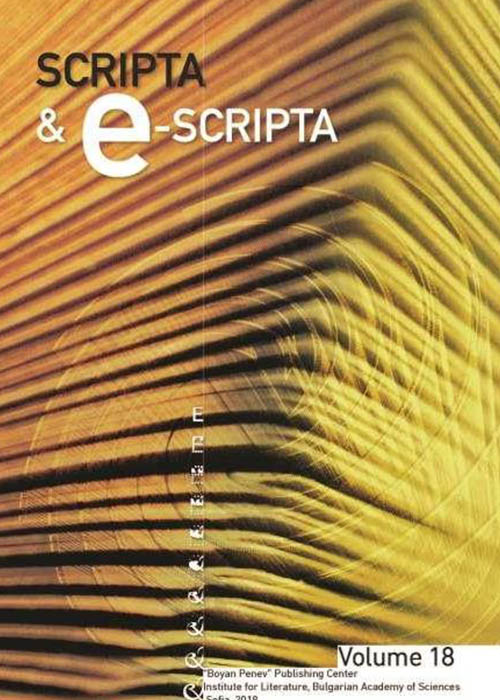Some Observations on the Slavic Sources for Theta Notation

- Author(s): Mariana Dimitrova
- Subject(s): Music // Byzantine-Slavic chant tradition // Novgorod menaia // Slavic hymnography //
-
Published by: Institute for Literature BAS

- Print ISSN: 1312-238X
- Summary/Abstract:
The musical sign with the shape of the Greek letter "theta" is used in the old-Byzantine notations to mark a melodic ornament or a melisma. This sign is normally present in the theta notation, which by its specifics reflects only certain melismas. It has been established that the places of the theta signs coincide in the differently noted copies of a certain Greek chant; in other words, if we notice a theta above a separate word in the stihir of the Greek Menaia (or Triodion, Penticostarion, Octoihos, etc.), it is almost certain that we will find the same sign above the same word in the thoroughly noted copy of the stihira in the Greek chant Stiherarion. This coincidence allows us to think that the different Byzantine notations reflect a similar melodic structure, connected with the peculiarities of the concrete text. Regarding the Slavonic texts where we can find the theta notation, so far they have not been compared to the respective noted repertoire in the specialized chant manuscripts. This article presents some results of the first of its kind study. A starting point of the study is the stihiras with theta notation present in Service menaia published by V. Jagich for September, October and November. They are compared with the parallel texts in a Russian Stiherarion with crucor notation and a Greek Stiherarion with Coalen notation (Table 1 a-b-c). It turns out that 80% of the theta signs, put in the Jagich menaion have an equivalent in the Russian, as well as in the Greek chant Stihirarion. Therefore, the use of the sign in the Slavonic texts holds on to the principle, set in the Byzantine tradition, as well as on the concrete Greek model (in case that the chant is translated). However, contrary is the result from the comparison of the Dragan menaion with the same two Stiheraria: only 20% of the theta signs which are noticed in the stiheraria for September, October and November, have a parallel in the copies with a developed notation (Table 2). This is mainly due to the variety of texts put in the Dragan menaion. The cause of most stihirs, which can be described as a “paraphrase”, does not coincide with the literal translation in the Russian Stiherarion and follows a different musical-poetic scheme.
Journal: Scripta & e-Scripta vol 3-4, 2006
-
Page Range: 225-237
No. of Pages: 13
Language: English - LINK CEEOL: https://www.ceeol.com/search/article-detail?id=83427
-
KEYWORDS:
-